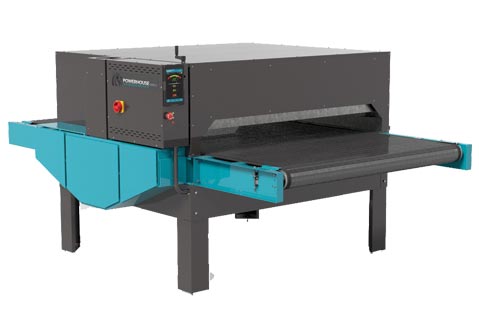Strategy April 10, 2017
How to Dry Water-Based and Plastisol Inks Easily
Save money, energy and space by using a single conveyor dryer system.
The most important part of finishing a screen-printing job is to dry or cure the ink or liquids that created your customer’s signature artwork or promotional message properly without damaging the garment.

A new conveyor dryer from Workhorse Products provides the ability to dry both water-based and plastisol inks and adjust infrared heating elements; it also offers tablet touchpad controls so the operator can adjust or program three preset drying or curing programs for consistent, reliable results.
“The decorating industry has been trying to move to more water-based inks, even though we remain about 90% plastisol printing,” says Paul Schmidt, Midwest regional manager for Workhorse Products, located in Gurnee, IL, a suburb of Chicago.
Schmidt says water-based inks provide a soft-hand feel on garments, as opposed to the sturdy, more rigid feel of “bullet-proof” plastisol inks, which are typically used for 100% polyester garments like professional football jerseys.
Schmidt says differences in drying methods for both types of inks as well as fabric constraints drove the development of Workhorse’s new dryer, which can be used on any brand of screen-printing press. “You don’t have to have one of our presses to use this dryer,” Schmidt says.
Settings for 100% cotton, 100% polyester as well as performance blend garments can be programmed into the dryer’s software to minimize errors during production.
Takeaway Tips
1. Most electric dryers are designed for curing plastisol inks, which are PVC-based inks that don’t contain solvents. They require heat curing time to set up.
2. One-hundred percent polyester garments are sensitive to higher temperatures, which can create a chemical effect on the garment, such as melting, or other problems such as dye migration of the fabric and artwork.
3. Automatic presses provide higher production run volumes. This requires precise drying specifications to ensure finished garments look great from start to finish.
4. Water-based inks and plastisol inks don’t behave the same way. “Water-based inks need time for the water to evaporate – it doesn’t happen instantly,” says Paul Schmidt of Workhorse Products, whereas plastisol inks dry with a curing process.
